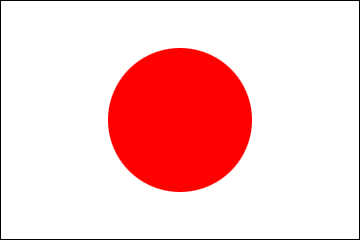Friends of Japan Series: APIC Japan Journalism Fellow – Ryan Bachoo
2024/4/6
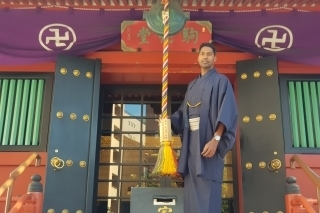
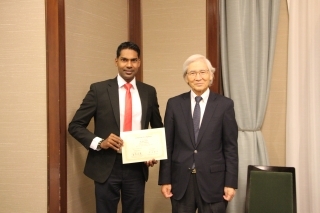
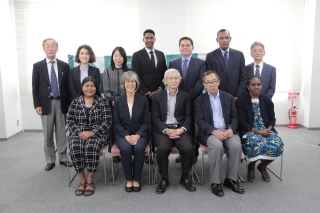
Friends of Japan Series: APIC Japan Journalism Fellow – Ryan Bachoo
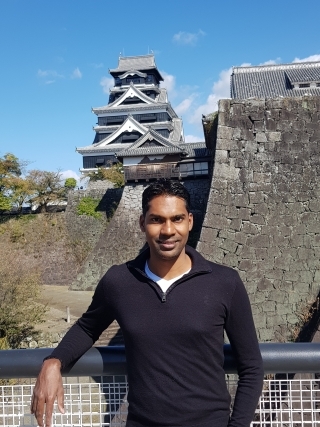
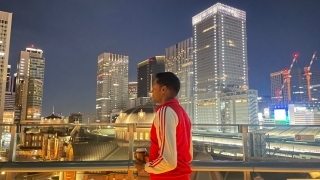
In mid-October last year, I traveled across the world to an unknown destiny in Japan. Earlier in 2023, I was selected for the APIC Japan Journalism Fellowship, one of the most well-rounded environmental programmes in the world. Yet, for this small-town boy, a trip to Japan meant more than honing my skills and increasing my knowledge in environmental journalism. It meant coming face to face with a country not only steeped in history but also leading in the 21st century.
That balance of history and modernity, from the age-old Kumamoto Castle to the bullet trains of Tokyo, this Japanese trip would open a whole new world to me. Journalism in the 21st century demands a view of the world. And so, for two weeks, I set about exploring environmental issues cities in Japan have come face to face with and ultimately conquered. More importantly, there were lessons to adopt in my own country.
None more so than the landfills. Trinidad and Tobago's landfills are a major problem, but as a nation once we dispense of our garbage we don't care where it goes. Osaki Town is an example for the world, and this isn't just a cliche. The world literally travels to the Kagoshima town to study its waste disposal systems. There, I was able to explore how officials in the town carefully manage and strategise the use of their landfill. Further to that, the recycling habit of the residents was on show from the students at Osaki Elementary School to the elders sorting through recycling bags at sunrise.
The programme exposed me to several waste disposal sites as well as recycling factories. It wasn't meant to show off what Japan has been able to do, but rather show what some of our countries in the Caribbean ought to be aspiring to. As a journalist, I was particularly happy to visit the Kumamoto Nichinichi Shimbun media company where the cohort of fellows were given a tour. We also had the opportunity to visit the Asahi Shimbun Foreign News Section. Visits to these organisations were pivotal to me in seeing how international newsrooms operate and gauge how I can better my own standard of journalism.
I was able to produce several high quality print and television stories which garnered national attention back home. Further to that, with the help of APIC Program Coordinator, Floyd Takeuchi, I was able to produce my first editorial column on the urgent need to address issues facing landfills in Trinidad and Tobago.
When I put the pen and paper down, the culture of the Japan consumed me. My visit to Kumamoto Castle exposed me to centuries of history while the Kumamoto Earthquake Disaster Museum memorialises one of the country's darkest moments. It all culminated with the kimono dressing and tea ceremony experience. This was the essence of Japan in all its authenticity. But it also allowed me to unwind a bit after several days of writing story after story. I quite liked the kimono dressing I picked and was able to absorb a wonderful experience steeped in centuries of Japanese history. It was an experience I would remember and appreciate for the rest of my life.
Friends of Japan Series: APIC Japan Journalist Fellow (Japanese Embassy Facebook)
Friends of Japan Series Archives
That balance of history and modernity, from the age-old Kumamoto Castle to the bullet trains of Tokyo, this Japanese trip would open a whole new world to me. Journalism in the 21st century demands a view of the world. And so, for two weeks, I set about exploring environmental issues cities in Japan have come face to face with and ultimately conquered. More importantly, there were lessons to adopt in my own country.
None more so than the landfills. Trinidad and Tobago's landfills are a major problem, but as a nation once we dispense of our garbage we don't care where it goes. Osaki Town is an example for the world, and this isn't just a cliche. The world literally travels to the Kagoshima town to study its waste disposal systems. There, I was able to explore how officials in the town carefully manage and strategise the use of their landfill. Further to that, the recycling habit of the residents was on show from the students at Osaki Elementary School to the elders sorting through recycling bags at sunrise.
The programme exposed me to several waste disposal sites as well as recycling factories. It wasn't meant to show off what Japan has been able to do, but rather show what some of our countries in the Caribbean ought to be aspiring to. As a journalist, I was particularly happy to visit the Kumamoto Nichinichi Shimbun media company where the cohort of fellows were given a tour. We also had the opportunity to visit the Asahi Shimbun Foreign News Section. Visits to these organisations were pivotal to me in seeing how international newsrooms operate and gauge how I can better my own standard of journalism.
I was able to produce several high quality print and television stories which garnered national attention back home. Further to that, with the help of APIC Program Coordinator, Floyd Takeuchi, I was able to produce my first editorial column on the urgent need to address issues facing landfills in Trinidad and Tobago.
When I put the pen and paper down, the culture of the Japan consumed me. My visit to Kumamoto Castle exposed me to centuries of history while the Kumamoto Earthquake Disaster Museum memorialises one of the country's darkest moments. It all culminated with the kimono dressing and tea ceremony experience. This was the essence of Japan in all its authenticity. But it also allowed me to unwind a bit after several days of writing story after story. I quite liked the kimono dressing I picked and was able to absorb a wonderful experience steeped in centuries of Japanese history. It was an experience I would remember and appreciate for the rest of my life.
Friends of Japan Series: APIC Japan Journalist Fellow (Japanese Embassy Facebook)
Friends of Japan Series Archives
